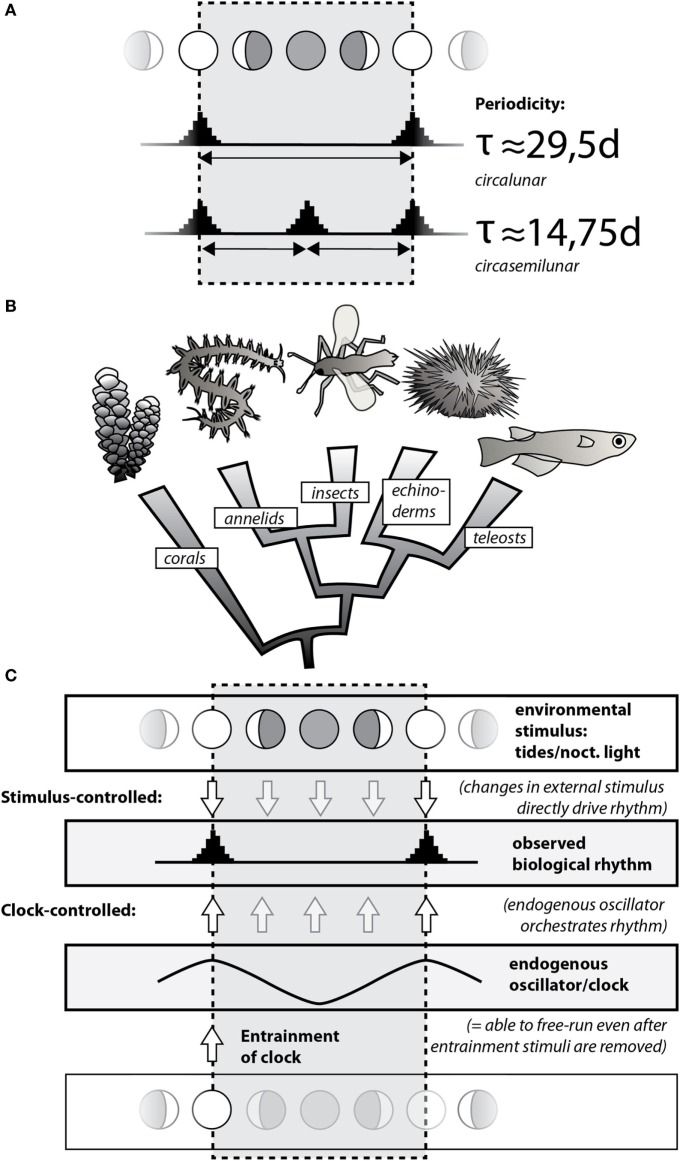Figure 1.
Circalunar and circasemilunar rhythms and clocks/oscillators are widely present in the animal kingdom. (A) Common biological rhythms linked to the moon cycle can be classified into circalunar and circasemilunar rhythms based on their periodicity, reflecting the re-occurrence of specific events/states once or twice, respectively, during the lunar month. Note that these events/states can be matched with any of the lunar phases, with the example showing synchrony with the full/new moon. (B) Circalunar/circasemilunar rhythms are found in a broad range of animals, as demonstrated by the phylogenetic position of individual animal groups in which reproductive cycles have been linked to the lunar phase (see text). (C) Biological rhythms either reflect direct response of an organism to changes in the respective environmental stimulus, such as nocturnal light (top; “Stimulus-controlled”); or they are driven by endogenous clocks that are entrained/set by a particular state of the environmental stimulus (bottom; “Clock-controlled”). As the environmental stimulus is not required for an endogenous clock to continue, a clock-mediated biological rhythm also “free-runs” if the environmental stimulus is experimentally removed.

